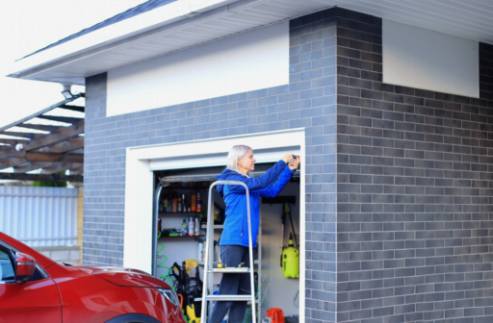Save Money on Heating and Cooling Bills: The Benefits of Garage Door Insulation
22 November 2025 by Jannat R.As an expert in DIY projects around the modern home, I understand the importance of finding cost-effective solutions to reduce energy bills. One often overlooked area for energy efficiency is the garage, specifically the garage door. In this article, we will explore the benefits of garage door insulation and how it can help save money on heating and cooling bills. From understanding the impact of insulation to selecting the right materials and installation process, we will cover everything you need to know to maximize heating and cooling efficiency in your home. Additionally, we will discuss the long-term savings and return on investment from an insulated garage door, as well as the additional advantages such as noise reduction and increased home value.

Understanding the Impact of Garage Door Insulation on Energy Costs
Garage door insulation can have a significant impact on energy costs for your home. Uninsulated garage doors allow for a significant amount of heat loss in the winter and heat gain in the summer, which can lead to higher heating and cooling bills. By adding insulation to your garage door, you can better regulate the temperature inside your garage, which in turn can help to reduce the overall energy consumption of your home. This can result in cost savings on your heating and cooling bills, making garage door insulation a worthwhile investment for homeowners looking to control their energy costs.Selecting the Right Insulation Material for Your Garage Door
When it comes to selecting the right insulation material for your garage door, there are a few key factors to consider. First and foremost, you'll want to choose a material that offers a high level of thermal resistance in order to effectively reduce heat transfer. Common insulation materials for garage doors include fiberglass, foam board, and reflective insulation. Each of these materials has its own set of benefits and drawbacks, so it's important to carefully weigh your options before making a decision. Additionally, you'll also want to consider the R-value of the insulation material, which measures its thermal resistance. The higher the R-value, the better the insulation material will be at reducing heat transfer. Lastly, consider the ease of installation and durability of the insulation material, as these factors will impact the long-term effectiveness of insulating your garage door.The Installation Process of Garage Door Insulation
The installation process of garage door insulation is a fairly straightforward and manageable DIY project for homeowners. With the right tools and materials, you can effectively insulate your garage door in a short amount of time. Here's a basic overview of the installation process:1. Measure and cut the insulation material to fit the dimensions of your garage door panels. Most insulation kits come with pre-cut panels that can be easily trimmed to size with a utility knife.
2. Clean the surface of the garage door panels to ensure that the insulation material will adhere properly. Use a mild detergent and water to remove any dirt, dust, or grease from the surface.
3. Apply adhesive to the back of the insulation panels. Some kits come with adhesive tape or liquid adhesive that can be applied to the panels before attaching them to the garage door.
4. Attach the insulation panels to the garage door panels. Start at the top of the door and work your way down, pressing each panel firmly into place to ensure a secure bond.
5. Seal the edges and seams of the insulation panels. Use caulk or weather-stripping to seal any gaps or cracks around the edges of the panels to prevent air leakage.
6. Test the garage door to ensure proper function. Open and close the door to make sure that the insulation does not interfere with the operation of the door. By following these steps, you can effectively insulate your garage door and start reaping the benefits of lower heating and cooling costs.